Renowned National Geographic biologist, explorer, and author Sylvia Earle once confessed that she found the lure of the unknown irresistible. That’s likely one of the more transparent truths at play in her far-seeing assertion: “No water, no life. No blue, no green.”
We live in an age awakening to the critical importance of green values and sustainable resources for the survival of the Earth. In that respect, is it at all surprising that most Eugene-area residents embrace our local water and its importance in their lives—and the life of our community?
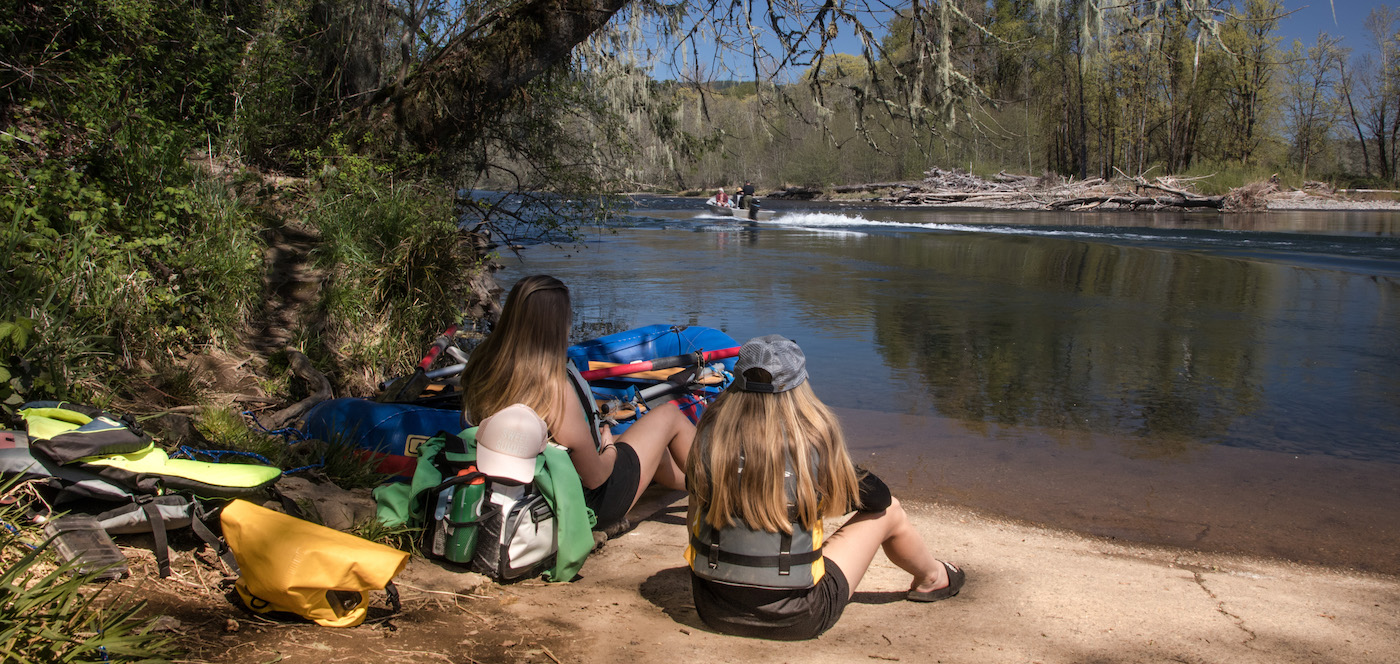
There are many references to water and local waterways found across the greater Eugene-Springfield area. Have you ever noticed that Springfield’s official logo features a drift boat on a stretch of the McKenzie River? Or that the city sponsors Upstream Art, an annual public mural project promoting local waterways and prevention of road pollution runoff? Or about just how often “river city” slips into conversations as descriptors for Springfield or Eugene? Ask your neighbors for confirmation: Water is fundamental to our local identity.
A national philosophy has also recently started dominating the local public perspective about smart community water management and stewardship. The emerging philosophy is known simply as “One Water.”
Essentially, One Water takes a systemic approach to tackling local problems based on the complete lifecycle of water, rather than isolated pieces of an aquatic equation. It’s an approach focused on achieving multiple benefits—economic, environmental, and social—by incorporating and coordinating a wide array of community elements. And there is an extensive list of local organizations that are engaged with each other in water-related management.
Water is fundamental to the definition and character of the greater Eugene-Springfield region. Consider its importance in the big picture of our community.
In the local business sector, for example, water is both a key service element and product. We use it commercially to wash laundry, wash pets, wash vehicles, and wash local produce. It’s an essential component of many locally manufactured chemical products, cleaning products, and health products. It’s a core ingredient in our highly regarded craft brewing industry. Water is an indispensable element in the basic operations and menu items of local restaurants.
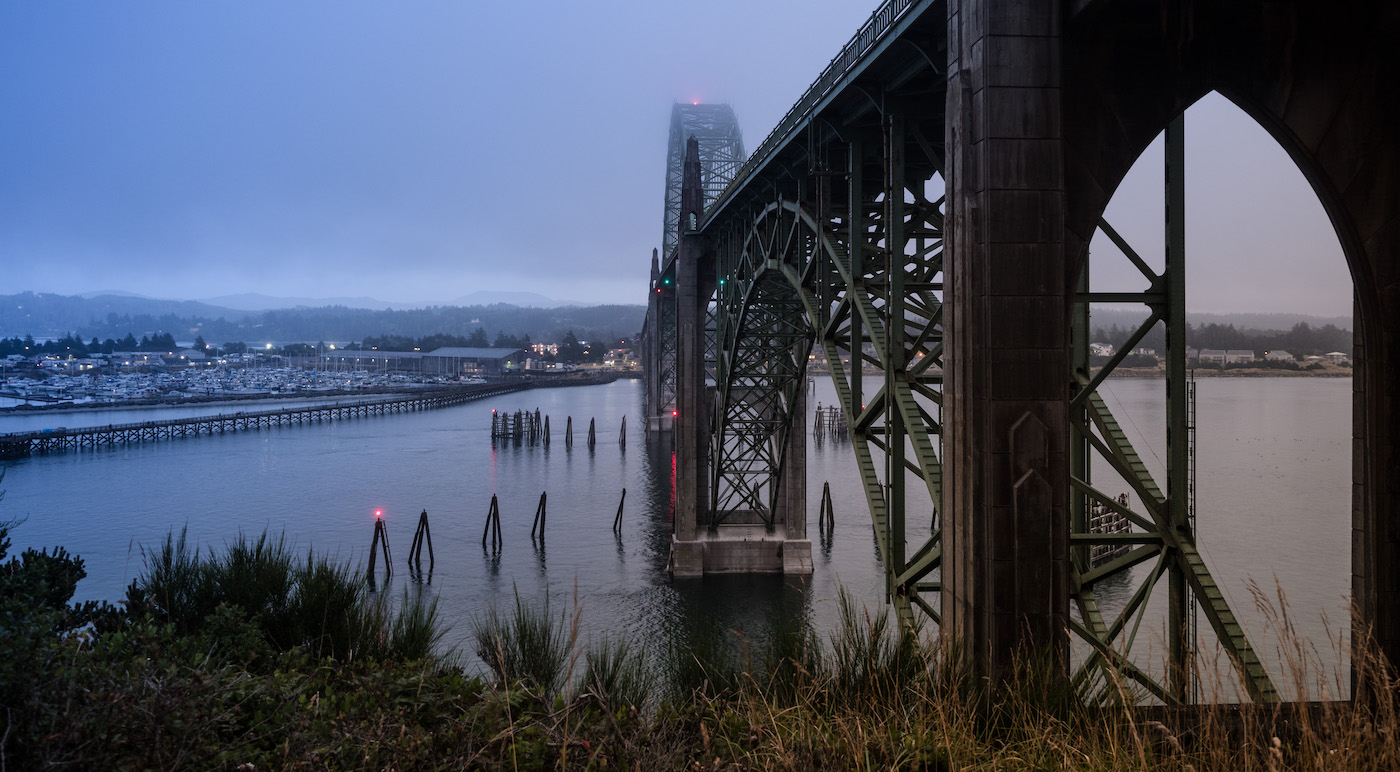
It also has a central place in our recreation: fishing, motor boating, swimming, sailing, water skiing, rafting, and so much more. Water is key to the appeal of almost everything in our local outdoor adventure, vacation, and tourism sectors: parks, resorts, picnicking, camping, hiking, beach play—the list goes on.
As researchers say, a quick, warm-weather excursion to fields just beyond the edge of our metropolitan area showcases the importance of water to our community’s local agricultural interests. Vegetable farms, grain fields, vineyards, and orchards fill much of the landscape. Irrigation activity fills the skies with moisture while contributing to plenty of wet soil.
Now let’s redirect our focus toward water’s place in our own homes. Consider the rainwater that runs off our roofs, the water used in home gardens or that floods down our drains and gets flushed down our toilets.
Household water use in the Eugene-Springfield area merits consideration from a variety of perspectives, especially in light of sustainability practices and green values. Much of our water is sourced directly from the sky, from rain. Some runs off the roofs of homes and buildings carrying chemical toxins like zinc (found in moss removal products) or mercury, all of which drain into local water tables and leach into our lakes and rivers. Other water falls directly to the ground around residential properties or becomes polluted runoff on private and public lands and roadways.
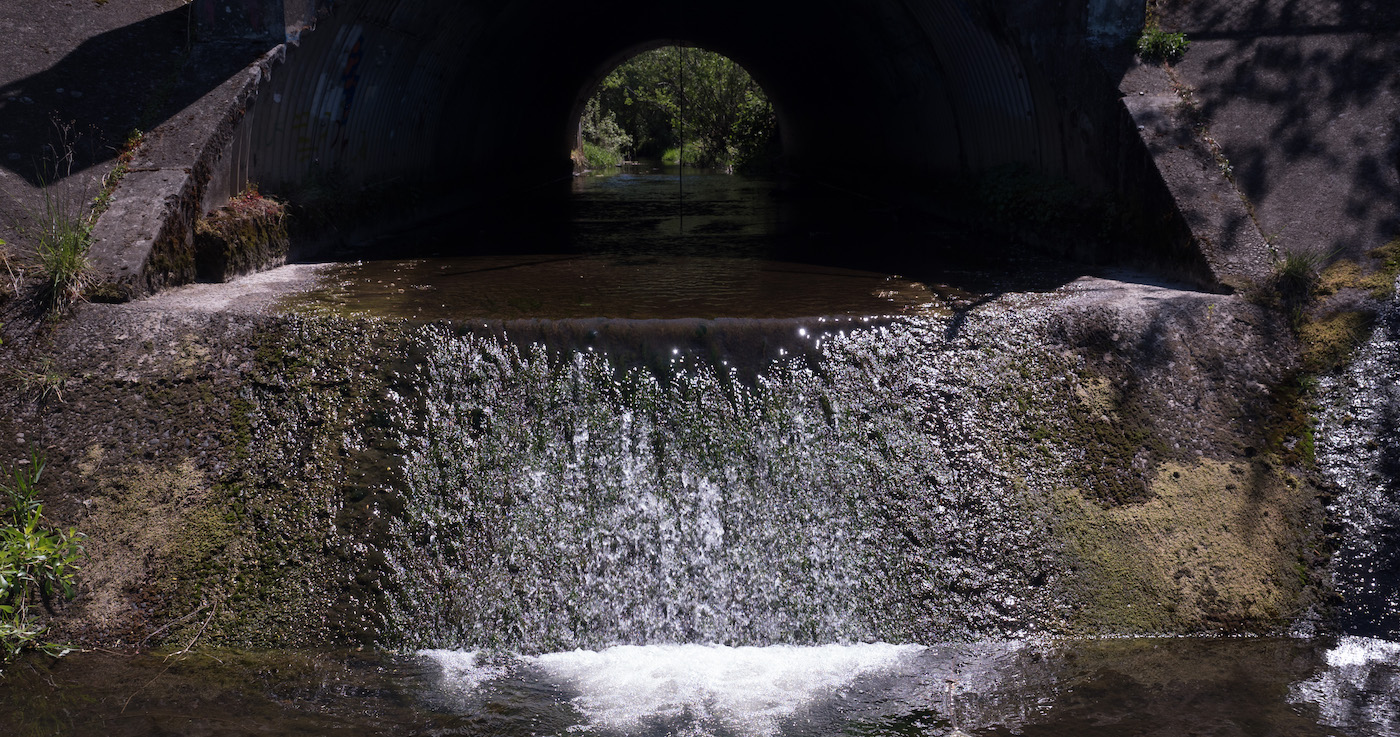
Fresh water, largely from the McKenzie River and delivered to local households by the Eugene Water & Electric Board (EWEB), is used in a wide variety of ways. After initial use, it often enters our local wastewater facility by way of household drainage and public-managed sewage systems. The metro treatment plant filters and cleans the wastewater before discharging it into the Willamette River for use by downstream communities.
Some freshwater also ends up in home gardens or finds alternate pathways into the local water table after being used for other household purposes. Smart household water use and disposal incorporates conservation practice and restricts chemical pollutants, discarded medications, and materials like baby wipes that clog hydro-system machinery.
Todd Miller works for Springfield Public Works as a planner for their Environmental Services Division. His background working in the local public water industry dates back 30 years. “We have one of the best fresh water supplies in the world with the McKenzie River,” Miller says. “And we have a huge responsibility to protect it.”
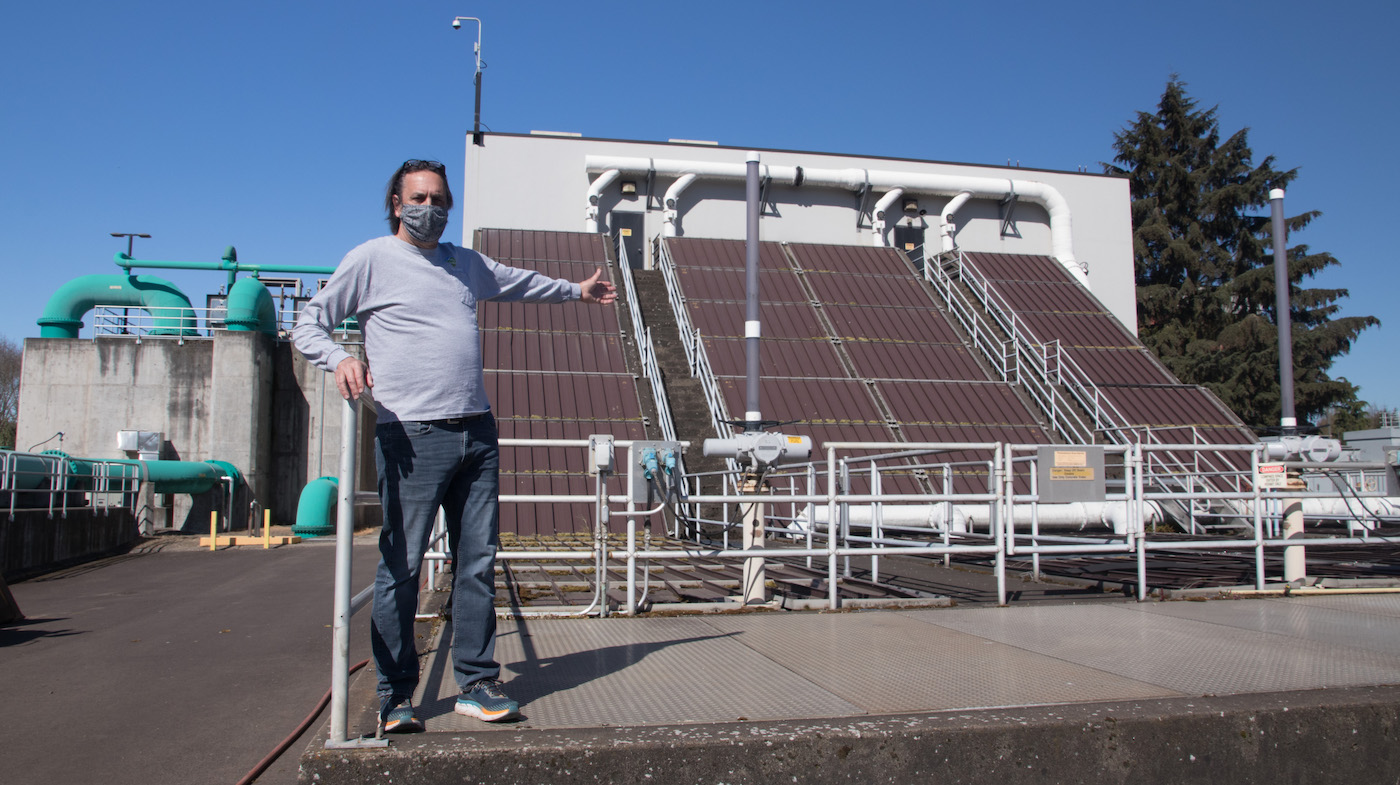
EWEB is the principal caretaker of most of our community’s fresh water. The water is sourced from 3,000-year-old volcanic stone reservoirs located beneath the central Cascades, aquifers fed by snowpack that feed the McKenzie River headwaters and serve as the near-exclusive freshwater source for Eugene. Upriver, EWEB uses that river water to generate massive electrical power. Downstream, at the Hayden Bridge Filtration Plant north of Springfield, EWEB purifies the water for community consumption.
From Hayden Bridge, the treated water is routed to and stored in a handful of large, manmade reservoirs across Eugene. The reservoirs serve as distribution points for delivering fresh water to the community via EWEB pumping stations.
To protect the fresh McKenzie River water, EWEB’s water quality supervisor, Karl Morgenstern, says EWEB “has to unravel a lot of strings.” Those strings include buffering runoff into the river, addressing homebuilding on floodways, and moving services into more urban landscapes.
“We could choose to take a very narrow approach,” says EWEB’s Jeannine Parisi, “and say we’re just going to treat with chemicals everything that comes down the watershed—and when it gets to your tap it’ll be drinking water, per EPA standards. That’s one approach. What we’re trying to do is cheaper and better. There are multiple benefits to protecting the water. It’s not just about drinking-water quality. For example, it’s also about the economy of upriver communities. They depend on a clean, healthy river for fishing, for tourism. There are a lot of reasons we don’t want to take a one-size-fits-all approach.”
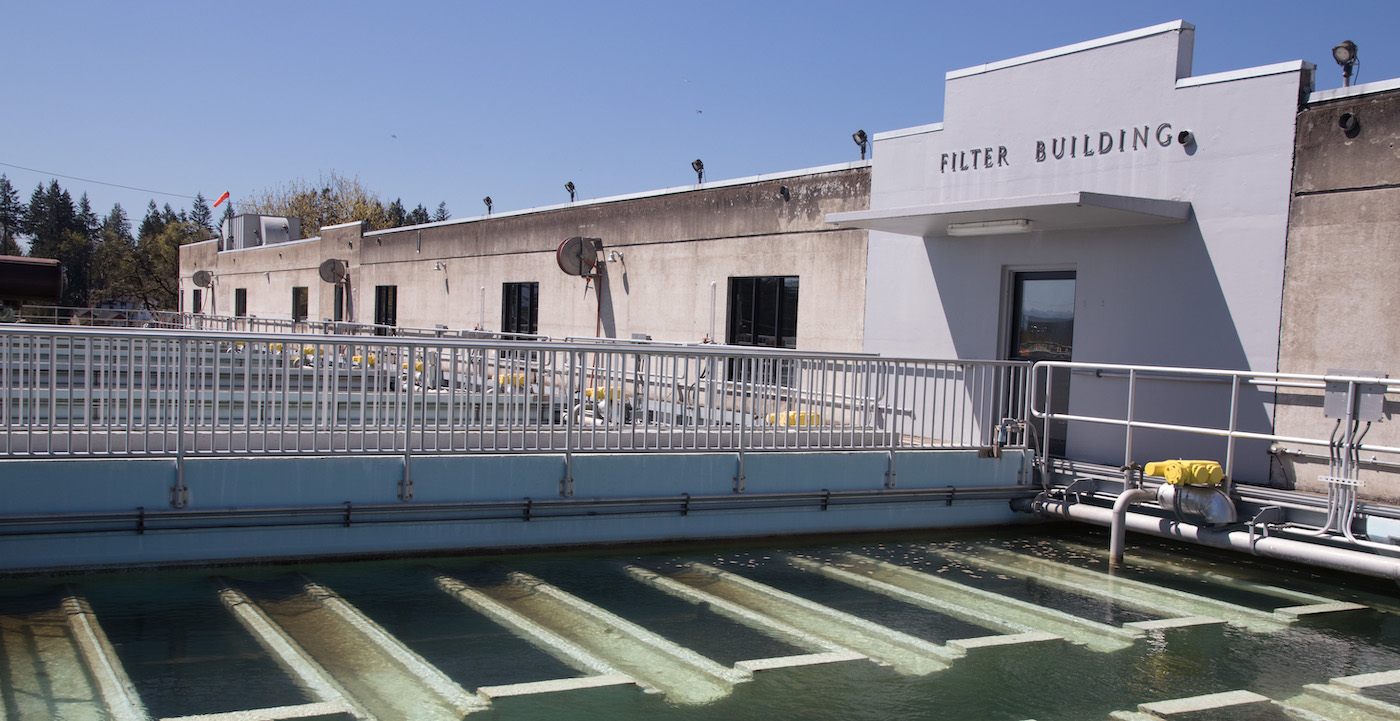
Wastewater from Eugene, Springfield, and the surrounding metro area is treated at the Water Pollution Control Facility in north Eugene. The plant is owned and broadly overseen by the Metropolitan Wastewater Management Commission, and operated by the City of Eugene. In the simplest terms, the facility is designed to remove garbage from used water, then return the cleaned water for use.
Well into the last century, the common view of water resources was that they were disposable: Make the water dirty, then throw it away. Over time, that attitude shifted toward a bigger focus on pollution control. Today, enlightened thinking has brought about ever greater changes in attitude.
“Basically, the wastewater plant is all about sustainability,” operations supervisor Steve Barnhardt says. “We take dirty water from Eugene and Springfield and we remove the solid portion from it. We take 98 percent of all the waste out of water and the solids are returned as an energy source.”
In drier weather, the wastewater plant processes about 30 million gallons of water per day, rising to more than 200 million gallons a day in peak wet weather season. Roughly a million gallons of phosphorous- and ammonia-laden clean water are used daily to fertilize poplar tree farms on bio-cycle plantations in wetland lagoons north of the city. Other solids are used as compost for grass seed farms. The bulk of locally treated water goes back into the Willamette River for downstream use.
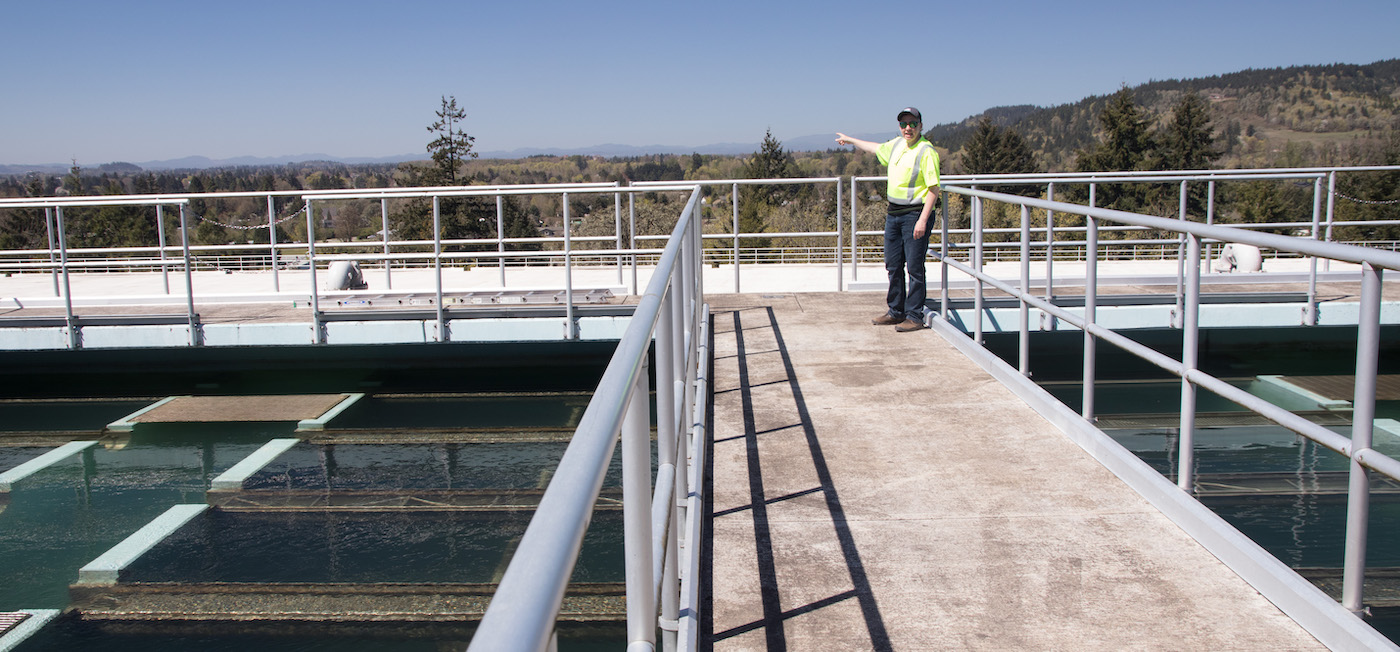
The fact is, it’s misleading to refer to local wastewater as a wasted resource. Locally treated water has been made safe for all manner of use shy of direct human consumption. Farming and agricultural irrigation, animal husbandry, industrial applications, and wetlands restoration are among the many new possibilities and approaches that help keep fresher water in the system.
So then, what about climate change? And the need for increased sustainability in water management practices? Our current issues and the challenges on the horizon are ponderous. And numerous.
One important perspective on water sustainability that is easy to overlook: Every drop of water on the planet is part of a closed system. There is no other water. There is never any new water.
Water in the sky, water as clouds, water flowing in rivers, pooling in puddles, washing up on shorelines, slumbering in wetlands: It’s all the same water. It’s the same water that makes up the Earth’s total mass of water. Sourcing water is really a matter of that same water shifting locations, evaporating, being absorbed, reflecting biological process, chemical activity, or the thermodynamics of weather. There is never any new water.
Last September, a massive fire spread flames across the McKenzie River Valley. The Holiday Farm Fire burned 173,000 acres of recreational forest and timberland, destroying about 400 homes in its wake. The fire left behind massive damage, but also valuable lessons about local watershed practices. Those lessons speak to climate change issues and sustainability practices that extend far into the future of our region.
One lesson: The massive loss of natural timberlands underscored the importance of maintaining control of downstream floodplains. Watershed design needs to be done in collaboration with timber growers. The planning should best address local economics, jobs, and social equilibrium.
Another lesson: Having multiple partners combine efforts in watershed management pays dividends. Rehabilitation of the upper McKenzie watershed by a coalition of local residents, upriver farmers, river guides, tribal community members, and government organizations reflects an action model for the future.
But likely the most portentous of the Holiday Farm Fire’s many climate lessons is one that extends beyond the fire zone to most of our local watersheds and riparian areas. Call it simply increasing water temperatures, which has caused increasing bacteria growth and other changes in the water. The net impact of the warming is the increasing death of fish and other aquatic species living in the affected water.
Those and other lessons associated with the Holiday Farm Fire reinforce the need to consider climate change and, in particular, how it will affect the interests of watershed-area land owners.
Flooding, another climate change concern, is expected to increase as our region sees cycles of more frequent rains over shorter periods of time, and less snow. Increased bio-blooms and elevated cyanotoxin levels in local waters are another clearly emerging, hugely concerning pattern.
One key remedy for these and a host of other challenges involves keeping water on local lands, maintaining and expanding riparian zones, and developing larger river floodplains.
The implications of climate change and the increased need for sustainability planning for local waterways are hugely important as we look to the future. The issues are both prevalent and far-reaching, far beyond the scope of a simple survey of recent local geographic history. Or local blue and green influences.
But then again, there is also plenty of value and truth to be found in any reflection on our relationship with local waters.
The profound symbolism of water is sometimes said to be drawn from two of its vital, functional qualities: It cleanses our lives by washing away dross and debris and it is essential, in every way, for our very existence.
In universal terms, water represents purity, fertility, life, motion, renewal, and transformation. That’s probably also true for water’s role in the Eugene-Springfield community. And very likely, your own life, too.


